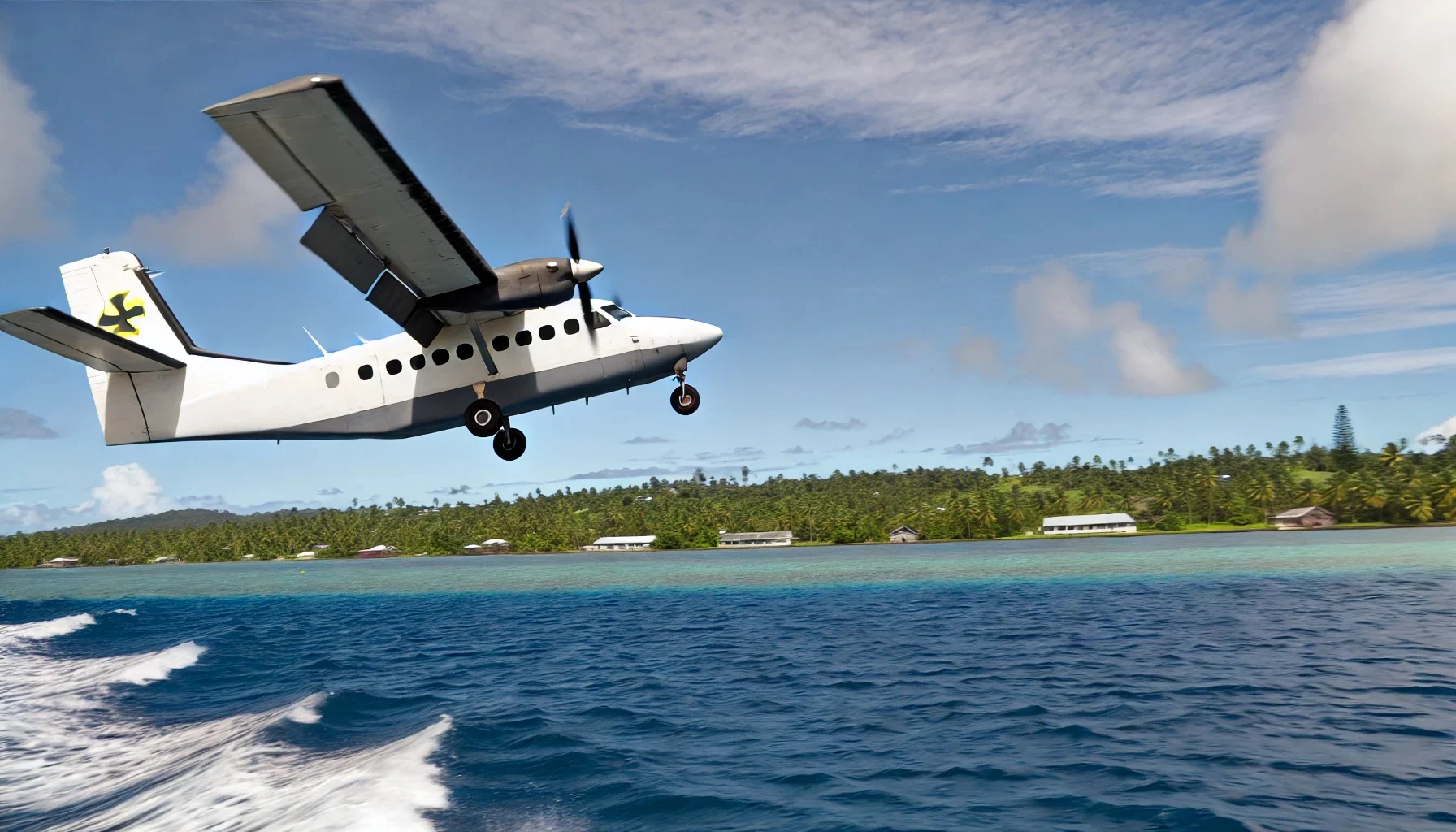
The Air Moorea Flight 1121 Crash
by: The Calamity Calendar Team
August 9, 2007
On the morning of August 9, 2007, the island of Moorea, known for its stunning landscapes and tranquil lagoons, was bustling with activity. Among the daily operations was Air Moorea Flight 1121, a quick hop from Moorea to Fa’a’ā International Airport in Tahiti. This route was covered by a de Havilland Canada DHC-6 Twin Otter, a rugged and reliable aircraft designed to handle short flights and rough runways.
The Flight Begins
At 11:50 a.m., the Twin Otter lifted off from Moorea Airport. The skies were clear, and conditions were perfect for flying. Among the passengers were locals and tourists alike, perhaps anticipating the sights of Tahiti as the plane climbed into the sky.
However, almost immediately after takeoff, something went horribly wrong. Just moments into the flight, the aircraft began to lose altitude rapidly. It struggled to stay airborne, veering from its course as it plummeted toward the lagoon.
The Crash
Within minutes of takeoff, Flight 1121 crashed into the lagoon, approximately 700 meters (about 2,300 feet) from the runway’s end. The impact was devastating, and the plane quickly submerged beneath the water, leaving a trail of debris.
Thanks for subscribing!
All 19 passengers and the lone pilot were lost in the crash. In an instant, the vibrant promise of their journey was replaced by a grim reality. The lagoon, usually a scene of serene beauty, was now the site of a heart-wrenching tragedy.
Immediate Aftermath
The news of the crash spread rapidly, and emergency services were quick to respond. Search and rescue operations were launched, with the French military and local authorities working tirelessly to recover bodies and debris. However, there were no survivors, and the loss was deeply felt across the small, tight-knit community of French Polynesia.
Beyond the emotional toll, the crash had immediate economic repercussions. French Polynesia relies heavily on tourism, and the safety of inter-island flights became a pressing concern for both locals and visitors. The crash of Flight 1121 highlighted vulnerabilities that needed urgent attention.
The Investigation
In the days following the crash, an investigation was launched by the Bureau d’Enquêtes et d’Analyses pour la Sécurité de l’Aviation Civile (BEA) along with French authorities. Their task was to uncover what had gone wrong on that fateful flight.
As investigators examined the wreckage and analyzed data, they discovered a startling issue. The rudder control cable had snapped, a critical failure that led directly to the loss of control and subsequent crash. Further examination revealed that the cable had corroded over time due to inadequate maintenance—a shocking revelation given the aircraft’s reliance on the proper functioning of such components.
A Sobering Conclusion
The BEA’s final report, released in 2008, pointed to maintenance failings as the primary cause of the accident. The lack of redundancy in the control systems and the corrosive environment of the islands further compounded these issues. It became clear that neglect and oversight had paved the way for disaster.
As the findings were published, there was an urgent call for change. Air Moorea suspended operations for several weeks to address maintenance concerns, and protocols for fleet maintenance were rigorously reviewed and strengthened. The tragedy of Flight 1121 became a catalyst for regulatory changes in aircraft maintenance standards, particularly for operations in areas prone to corrosion.
Lessons Learned
The crash of Air Moorea Flight 1121 remains a poignant reminder of the critical importance of aircraft maintenance. It underscored how routine checks and diligence are not mere formalities but lifesaving necessities.
For French Polynesia, the tragedy served as a wake-up call, leading to better safety practices and heightened awareness of aviation risks. Today, the memory of those lost on Flight 1121 serves as a solemn testament to the consequences of neglect and the ongoing commitment to safety in the skies.
As we remember the events of that day, we are reminded of the delicate balance between human oversight and technological reliability. The lessons learned continue to influence aviation practices worldwide, ensuring that such a tragedy is not repeated.
Stay in the Loop!
Become a Calamity Insider and get exclusive Calamity Calendar updates delivered straight to your inbox.
Thanks! You're now subscribed.